While the applicability of some scales may escape you, there is something valuable to learn from everything. This brings me to one of the darkest scales that I’ve run into lately. Due to how it’s constructed, there are very interesting musical note combinations, although, many of them are difficult to use because of their dissonance.
The darkest scale is the double harmonic major scale which is just a major scale with a flat 2nd and a flat 6th. It features three half-steps in a row which form two augmented seconds. As a result, the double harmonic scale features some of the darkest modes and chords.
Why The Double Harmonic Major Scale Is So Dark
How to Understand The Double Harmonic Major Scale Compared to the Major Scale
Before we really do anything, we have to talk about the major scale first because it’s important for understanding the double harmonic major scale.
If you’ve taken the Punkademic course via their All-Access pass which I’ve mentioned before, you’re already familiar with this music theory. In that case, you can click this link to skip down to the actual reasons why the double harmonic major scale is dark.
The overall composition of the Double Harmonic Major Scale is this: 1 b2 3 4 5 b6 7. We’ll break down the scale in more detail below. For consistency, I’ll use the C Double Harmonic Major Scale and sometimes the E Double Harmonic Major Scale as a point of reference.
Those note names are E F G# A B C D# E for the E Double Harmonic Major Scale, and then C Db E F G Ab B for the C Double Harmonic Major Scale. As I said a moment ago, in simple terms, the Double Harmonic Major scale is just a regular major scale with a b2 and b6.
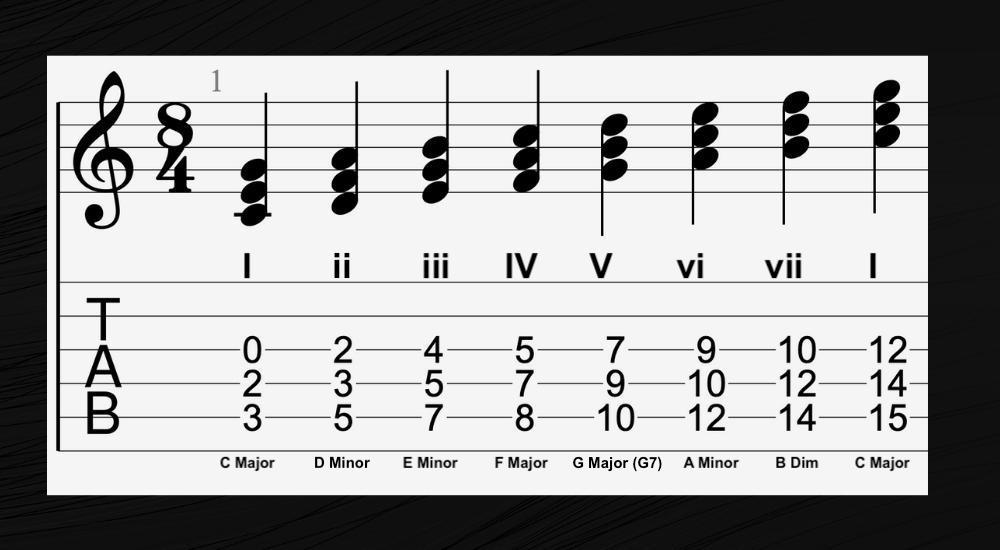
As I’ve explained at length in my guide to music theory, the major scale is the scale by which all other scales are compared and contrasted. So when I write: 1 2 3 4 5 6 7, I’m referring to the degrees of the major scale.
![Mark Sarnecki's Complete Elementary Rudiments - Why Do Some Pianos Start With A C and Not an A [ANSWERED]](https://producersociety.com/wp-content/uploads/2022/03/Mark-Sarneckis-Complete-Elementary-Rudiments-Why-Do-Some-Pianos-Start-With-A-C-and-Not-an-A-ANSWERED-1.jpg)
When you add a flat symbol to the 2nd and the 6th, we’re dropping those scale degrees down by a semi-tone. So what happens when we do that to every single chord in the scale of C Major? All the chords and the scale will look something like this:
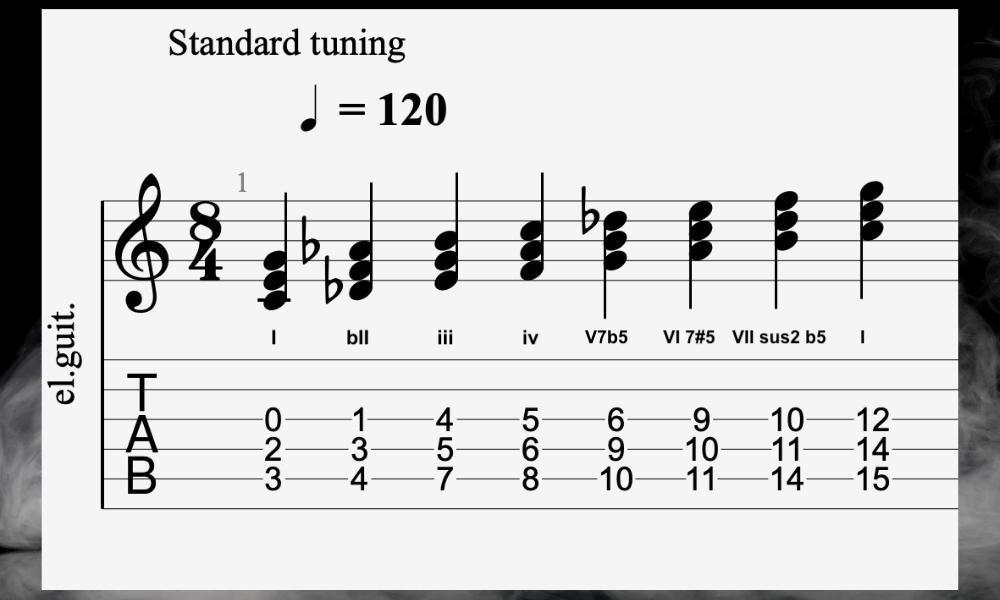
Regarding the numbered system, this is normally how we conceptualize scales, intervals, and other chords in music theory. We do this because it’s a really useful system and it’s easy to think of things this way. Another example would be the Lydian mode, which is 1 2 3 #4 5 6 7. What it means is that it’s just a major scale with a #4.
1) The Double Harmonic Major Scale is Dark Because of Its Multiple Half Step Intervals
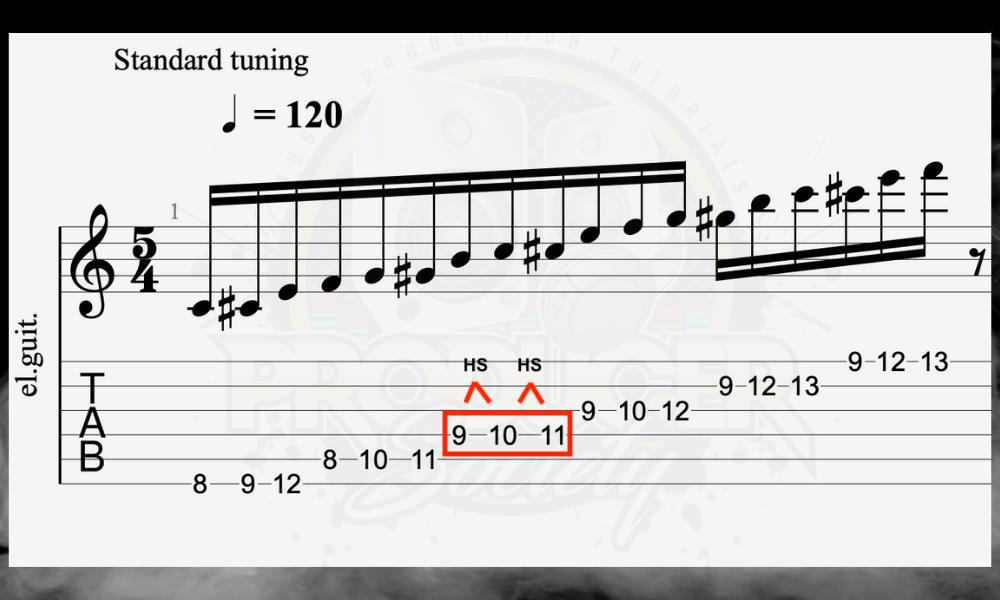
This scale has four half steps. The first one is between the first and second degrees of the scale. The next three are between the third and fourth, fifth and sixth, and seventh and eighth scale degrees.
It is very rare that a scale has no half-step intervals, but this scale is extra. What’s even more unique about this scale is that not only does it have many half-step intervals, but it also has three notes a half step apart in a row according to this page.
These half steps occur between the 7th and 8th, and the 1st and 2nd degrees. Basically, there are a lot of half steps which allows for a pretty dark sound. In contrast, even the harmonic minor scale has only three half steps.
However, another dark-sounding scale is the diminished scale which also has 4 half steps and a very dark sound. But it isn’t just the number of half-step intervals that make it dark. It’s the order of them as well as the 2 augmented seconds.
2) The Two Augmented Seconds Make It Dark
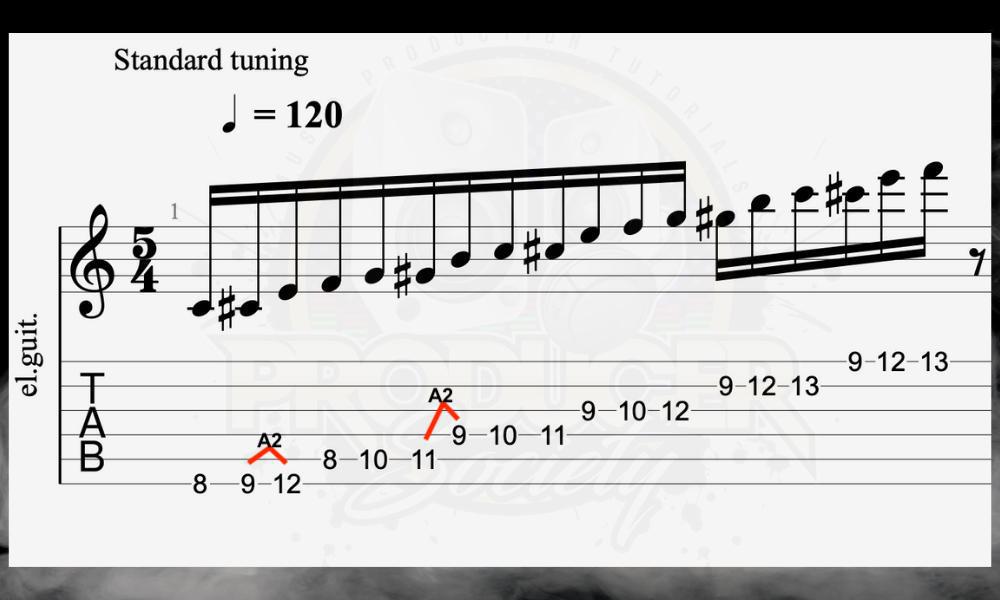
There are two augmented seconds in this scale, thus the name ‘double’ harmonic, according to 12Tone.
This unique characteristic of the double harmonic major scale creates a very distinctive sound reminiscent of the harmonic minor scale. Simply put, these two augmented seconds are a big part of what gives the scale its sound.
An augmented second is a unique interval that means that the second is raised up a half step. In music theory circles, it is important to write this as a second and not a minor third. The reasons for this are because the note names themselves indicate function within a scale.
If you play the scale you’ll notice that the augmented second is a very tense interval. The tenseness of this interval is what gives the scale its dark flavor. Experiment with the scale and you’ll find all sorts of musical surprises.
3) The Chords That Can Be Used With It Are Also Very Dissonant
These chords range from normal everyday chords to more bizarre sounds you don’t hear quite often. I’ll admit that even I wasn’t terribly familiar with some of the sounds that come from it.
A lot of it sounds like something you would hear in a score for a thriller or horror film from the 1970s (Rick Beato’s video demonstrates it).
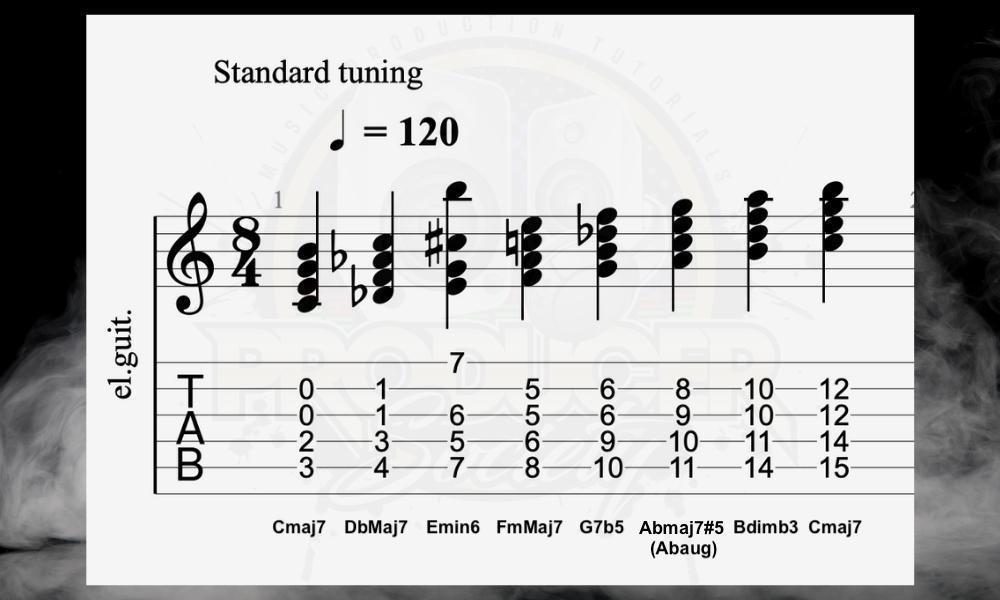
The First Two Chords Are Major Sevenths
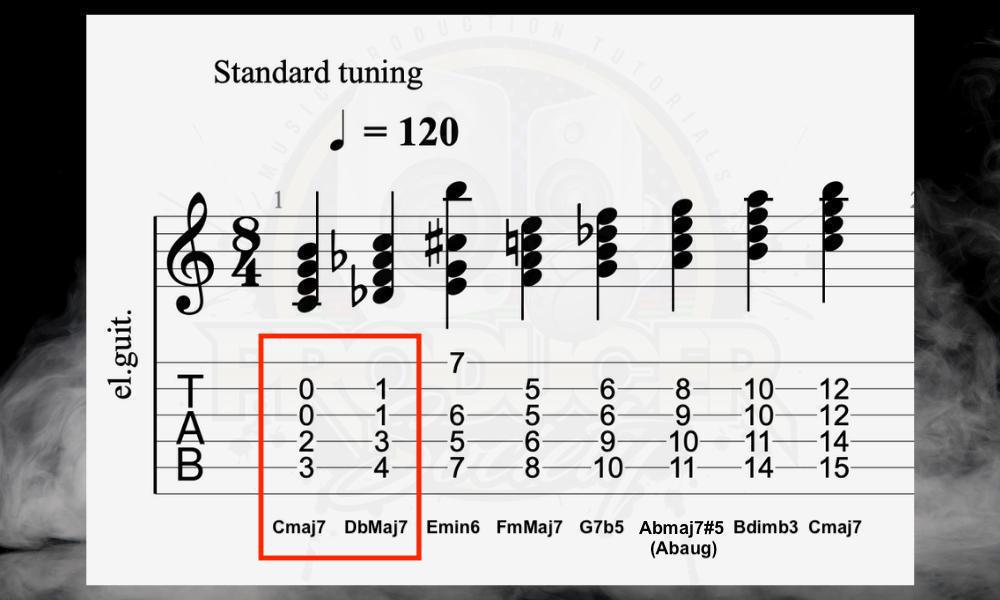
The first two chords built off of the first two scale degrees are both major seventh chords. A major seventh chord has a sweet but slightly dissonant sound because of the combination of major 3rd, perfect fifth, and major 7th intervals. The major 3rd and perfect 5th are the sweetness and the major 7th is the dissonance (sourness).

However, because these two chords are right next to each other, there is a dark half-step clashing effect. Try playing both chords separately, and playing different exercises with them. One such exercise can simply be playing the inversions of each chord.
Minor Sixth Chord
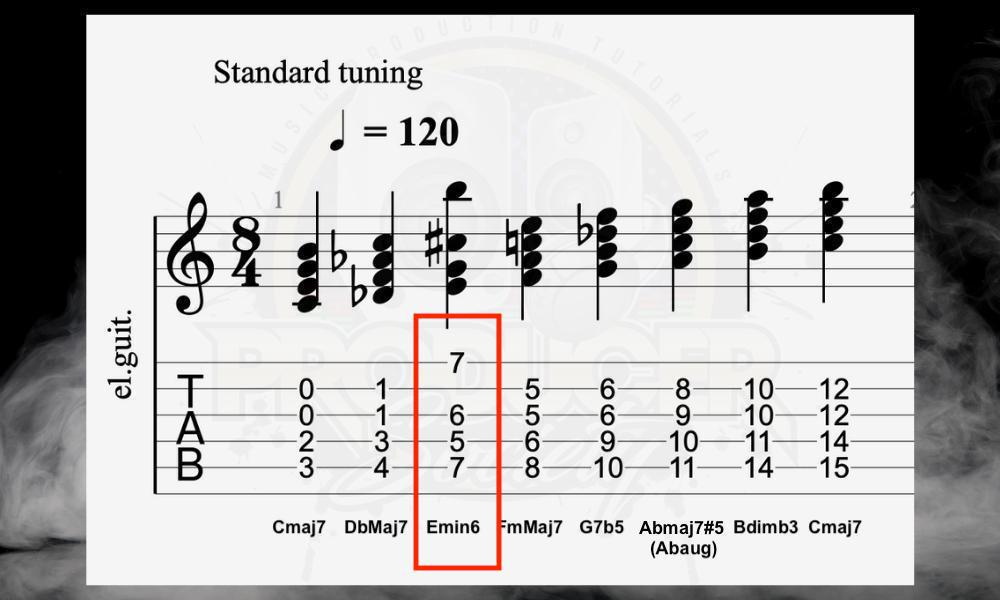
Next, is the chord built off of the third scale degree. This chord is a minor triad with a double flattened seventh. In order to simplify things, this chord is basically a minor sixth chord.
This is a minor triad with a major sixth interval from the root of the chord. It’s a very dissonant chord in case you’re unfamiliar with it.
Minor/Major 7th
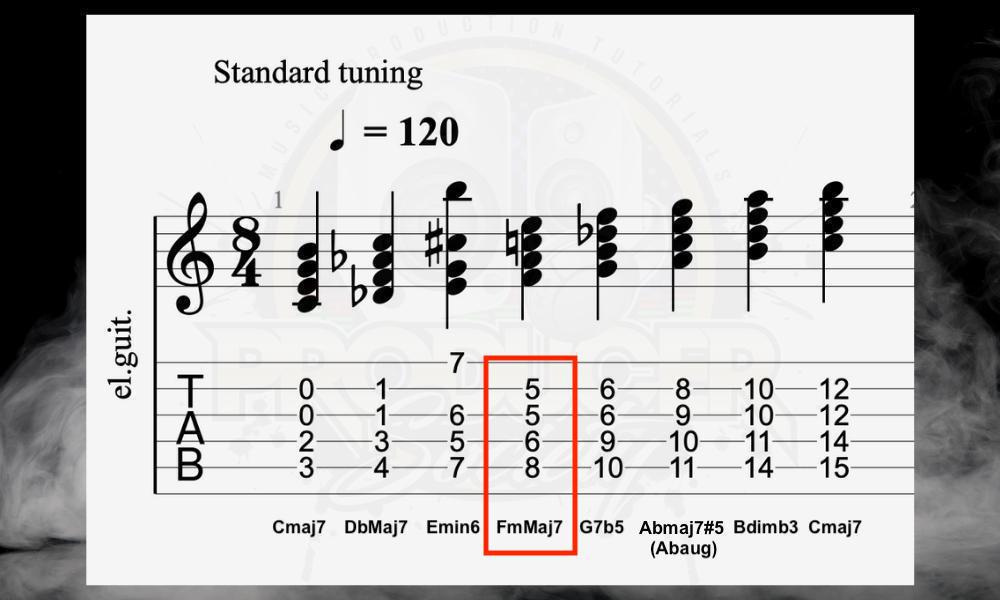
Once you reach the chord from the fourth scale degree things in the double harmonic major scale get more interesting. This is the minor with a major seventh chord.
The minor chord with a major seventh is a pretty tense sound that ends plenty of jazz tunes. It is also pretty unstable. The lack of stability creates an unresolved feeling that you could call dark and tense. This chord is also included in the regular harmonic minor scale.
Dominant 7th Flat-5
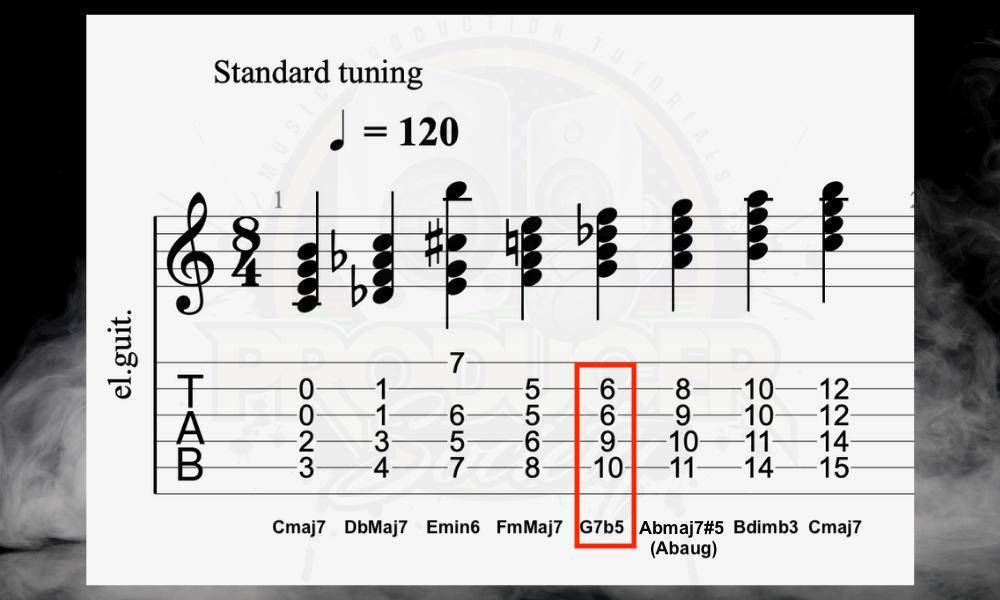
The chord that builds off of the fifth scale degree is a dominant seventh flat five chord. This sound is pretty hip and is great to play with the altered scale and even the fifth mode of harmonic major according to this Reddit thread. It is a chord sound that you should use if you are wanting to emphasize the flattened fifth.
Major 7#5 or Augmented Chord
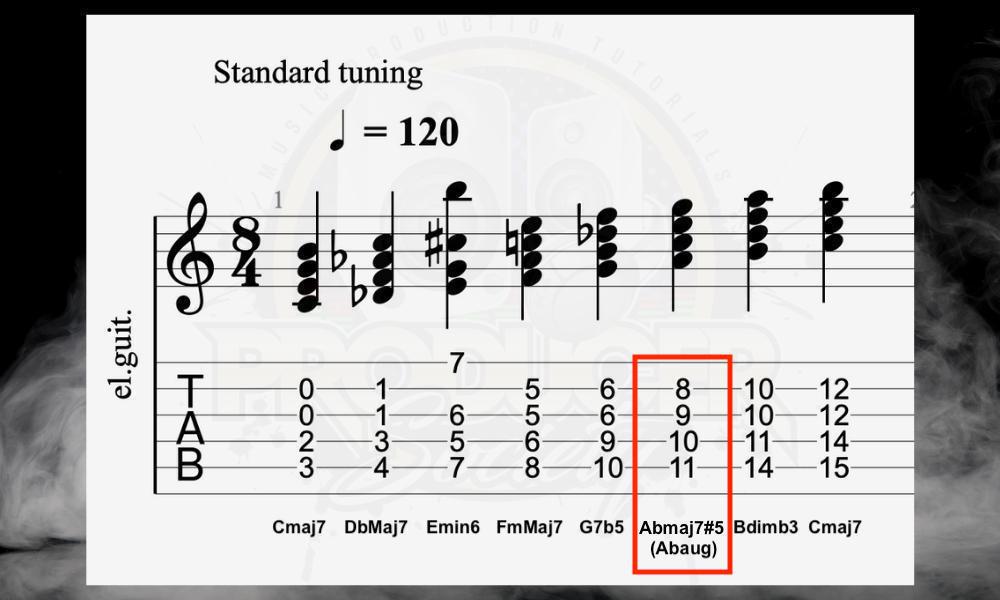
We are now at the chord built off of the sixth scale degree of double harmonic major. This chord is a major seventh chord with a sharp five (also called augmented). One thing to note is how there are several chords next to each other that differ greatly in terms of sound quality.
Specifically, the dominant seventh b5 sound versus the major seventh with a raised fifth sound is completely different. These two adjacent chords could not be further apart in terms of their individual color. This, again, is part of what gives this scale its insane darkness and tension.
Diminished b3 Chord
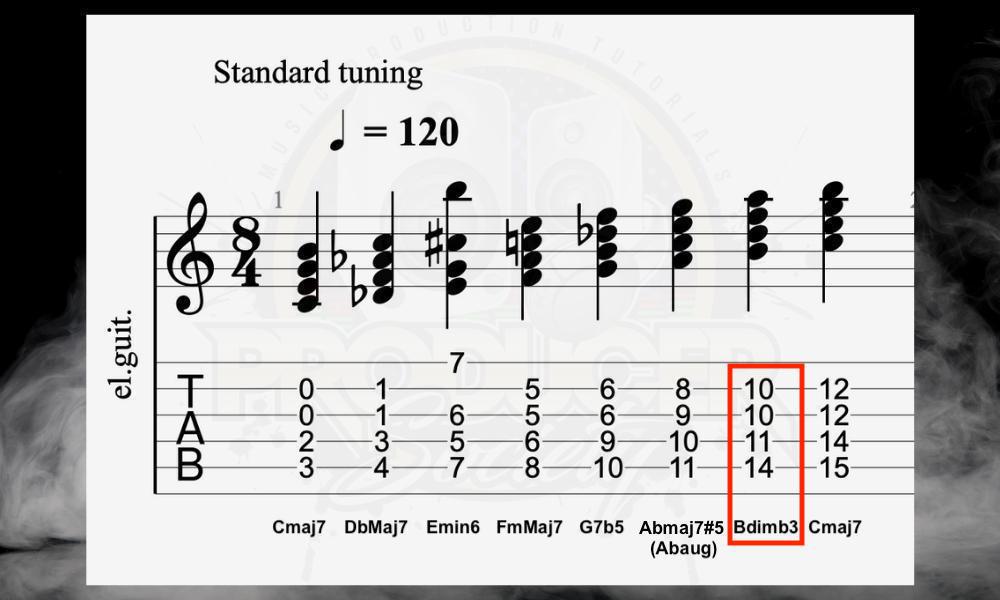
Once you reach the final scale degree, trying to build a recognizable chord is difficult. This chord can actually be seen as a dominant chord in the third inversion with the seventh on the bottom.
If you are thinking of the double harmonic major scale starting from E, you have D# as the seventh scale degree. This chord looks strange, with the notes F A, and C right above the D#.
However, if you view the D# as an Eb due to enharmonic equivalency, you get a simple F dominant chord with an Eb at the bottom.
The Modes That Make Up the Double Harmonic Major Scale
One thing that is great about any scale is that you can extend the possibilities using its modes. Using the modes, you start off with each scale degree within the scale to form a new sound.
In other words, if you have seven notes on a scale, you can make seven scales with the modes of the scale as I showed in my article on the modes. That’s a lot of scales.
1) Double Harmonic Major
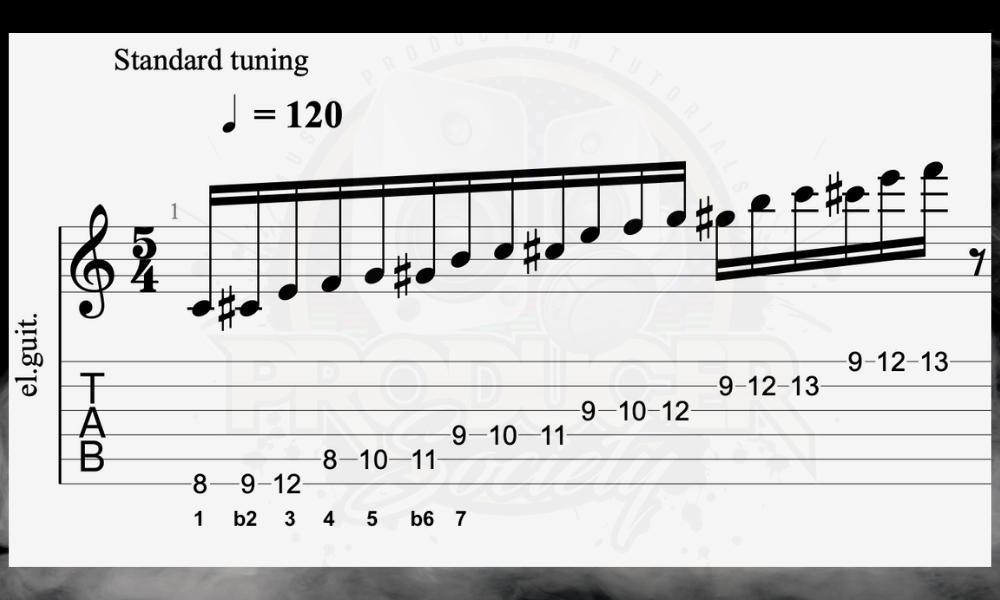
Structure of Double Harmonic Major: 1 b2 3 4 5 b6 7
Our original root is this mode. Its structure is 1 b2 3 4 5 b6 7. As we go through the modes, the structure of the scale will change significantly.
2) Lydian #6 #2
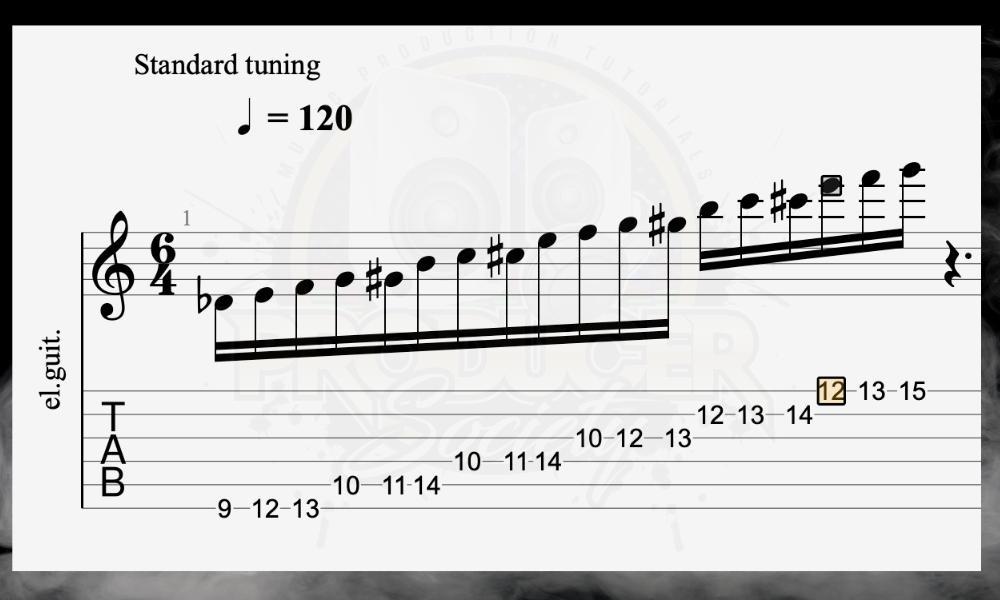
Structure of Lydian #6 and #2: 1 #2 3 #4 5 #6 7
Built off of the second scale degree, the structure for this scale is 1 #2 3 #4 5 #6 7. Knowing the structure of the modes allows you to try building the scale off of different notes. If you build the scale off of C, it would be: C D# E F# G A# B. Try building the scale using different notes as the starting pitch.
3) Alt Natural 5 bb7 or Ultraphyrgian Mode
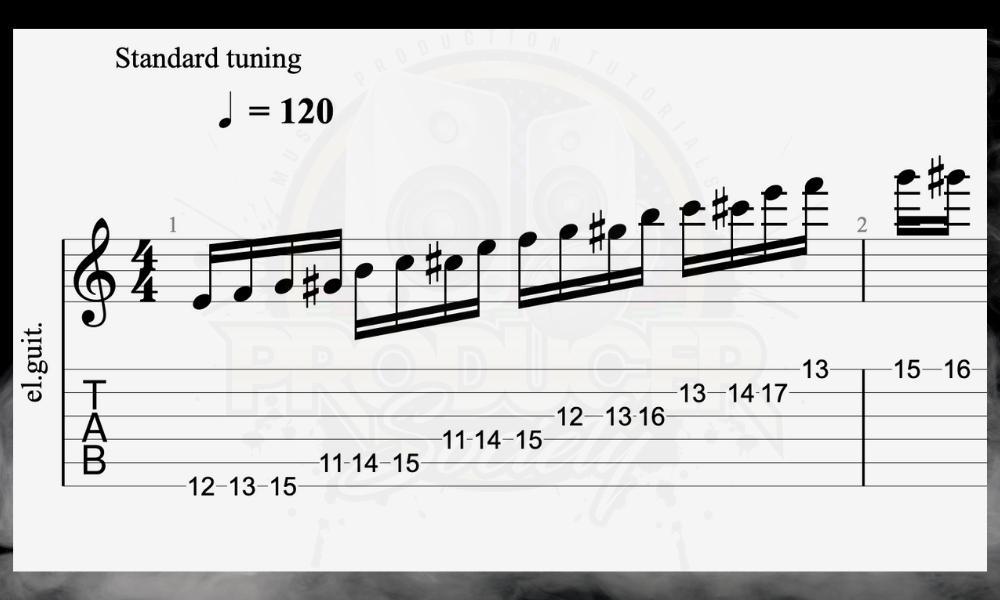
Structure of Ultraphrygian: 1 b2 b3 b4 5 b6 bb7.
This is quite the mode because every single note other than the root and the fifth are flattened. The structure of it is: 1 b2 b3 b4 5 b6 bb7.
4) Hungarian Minor

Structure of Hungarian Minor: 1 2 b3 #4 5 b6 7
In Classical Indian music, this scale is used quite commonly. It is also used in Hungarian music, which is probably where it gets its name from. One thing I will say is that some people consider this the actual scale, and not double harmonic major.
For instance, I have a book called the Guitar Grimoire which has a ton of scales and modes in it, and they include Hungarian Minor as its own scale, but then they neglect Double Harmonic Major. Regardless, its structure is: 1 2 b3 #4 5 b6 7
5) Oriental
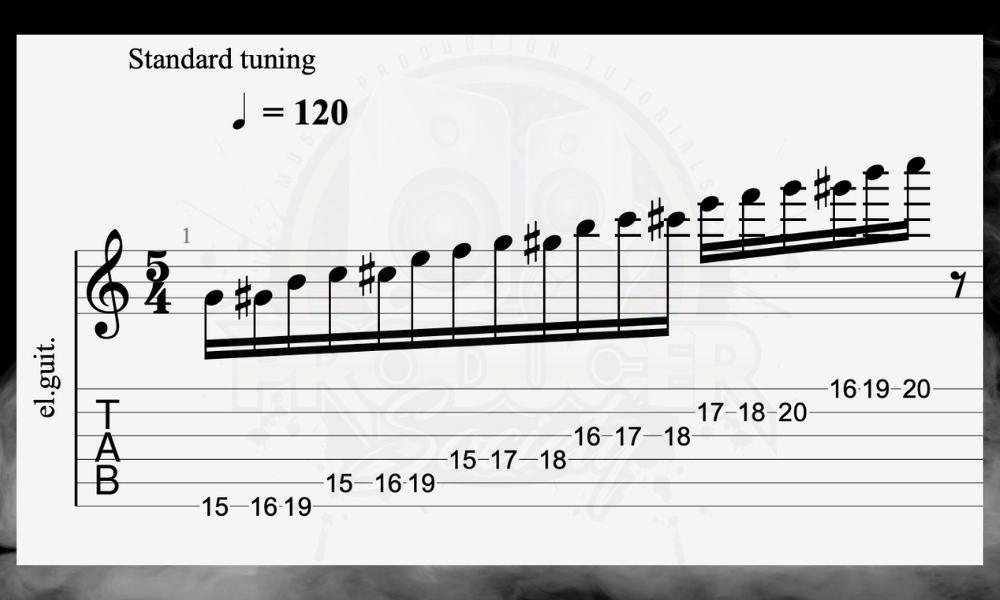
Structure of Oriental: 1 b2 3 4 b5 6 b7
The sequence for this scale is: 1 b2 3 4 b5 6 b7. Check out this great video that demonstrates the sound of this mode. Depending on what you are feeling, you might enjoy this particularly dark sound that sounds glorious on the guitar. The good news is the video also has tabs if you want to play along.
6) Ionian Augmented #2
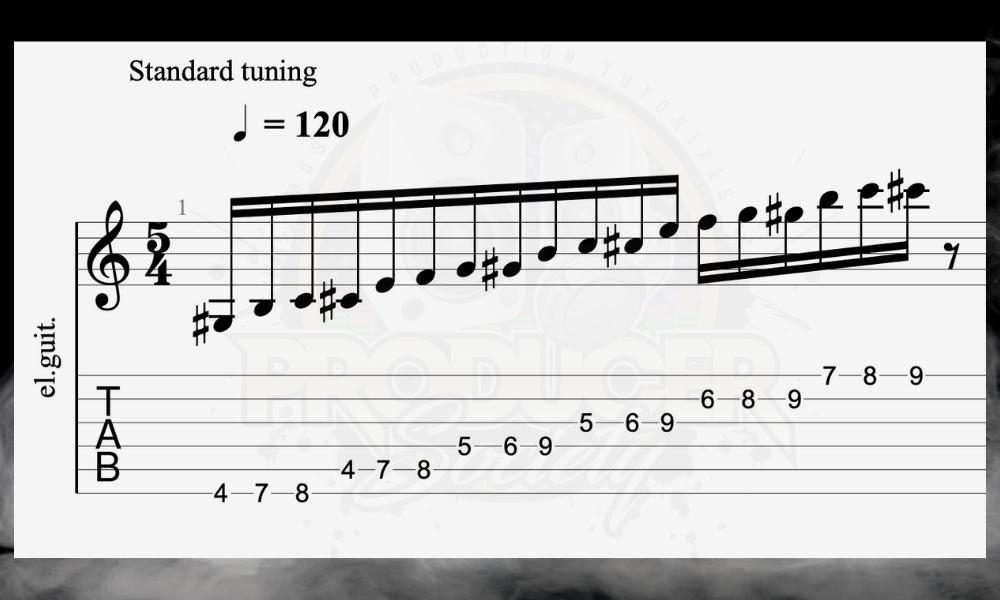
Structure of Ionian Augmented #2: 1 #2 3 4 #5 6 7
In this scale, the 2nd and 5th degrees are raised. The name reflects the Ionian mode, which is just major and has no raised degrees. Because the 2nd is raised we have the sharp 2. The fifth is also raised.
Note that a chord with a raised fifth will be called augmented due to naming conventions based on the triad. If you go back to more basic theory, the triads are as follows: major, minor, diminished, and augmented. A triad with a raised fifth is augmented.
7) Locrian bb3 bb7
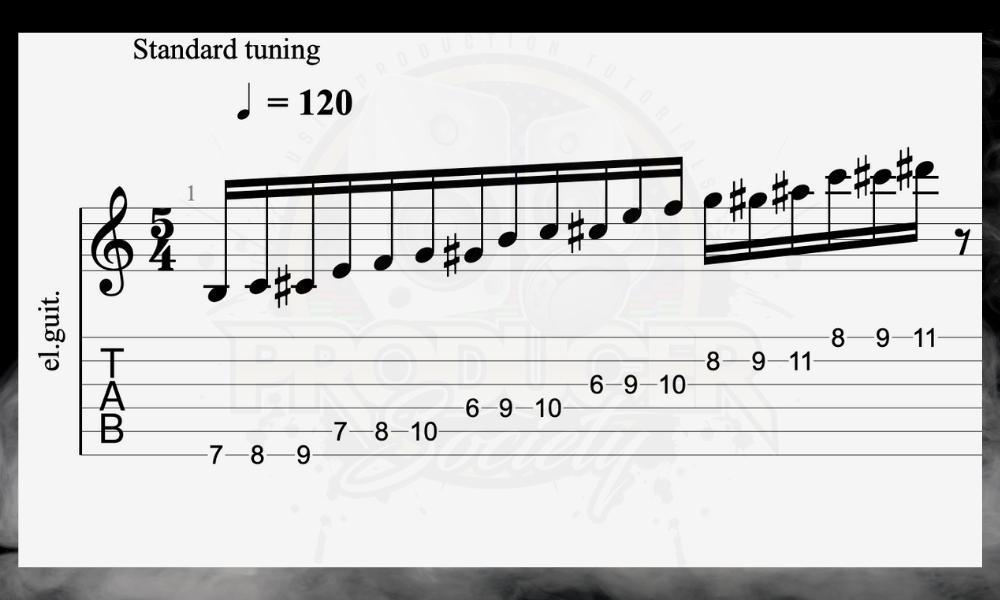
Structure of Locrian bb3 bb7: 1 b2 bb3 4 b5 b6 bb7
Because this scale has so many alterations its structure can be daunting. It is 1 b2 bb3 4 b5 b6 bb7. If you play it in C and use harmonic equivalents for ease it is C C# D# F F# G# A C. I notated it this way as some prefer only sharps versus a lot of flats.
Nahre Sol plays this mode quite beautifully in the video mentioned earlier and doesn’t seem to struggle with any of the theoretical logistics involved in making this mode.
The double harmonic major scale and its modes give you a lot of possibilities. If you are looking to go further into the darkness, you have to go outside of twelve-tone music and check out the dark possibilities of 19-EDO and other tuning systems.
Luckily, the Double Harmonic Major scales provide the most darkness within the context of twelve-tone music theory. You don’t have to experiment with microtones to get to a really dark place.
Important Things to Note About the Double Harmonic Major Scale
1) There Are Other Scales That Are Very Dark
In music, there are so many different scales that you can use. As a matter of fact, you can even make your own scales, so it’s important for me to add here that this is just my opinion based on what I know and what I’ve been taught. Experiment, learn and see what’s out there.
2) Some Musicians Think of This As Hungarian Minor
As I said earlier in the article, many musicians think of the Double Harmonic Major scale as actually a mode of Hungarian Minor, as if it’s not even a thing. This is why, in some texts like the Guitar Grimoire, for instance, you’ll find the Hungarian Minor and its modes listed and not the Double Harmonic Major Scale.


 Written By :
Written By : 